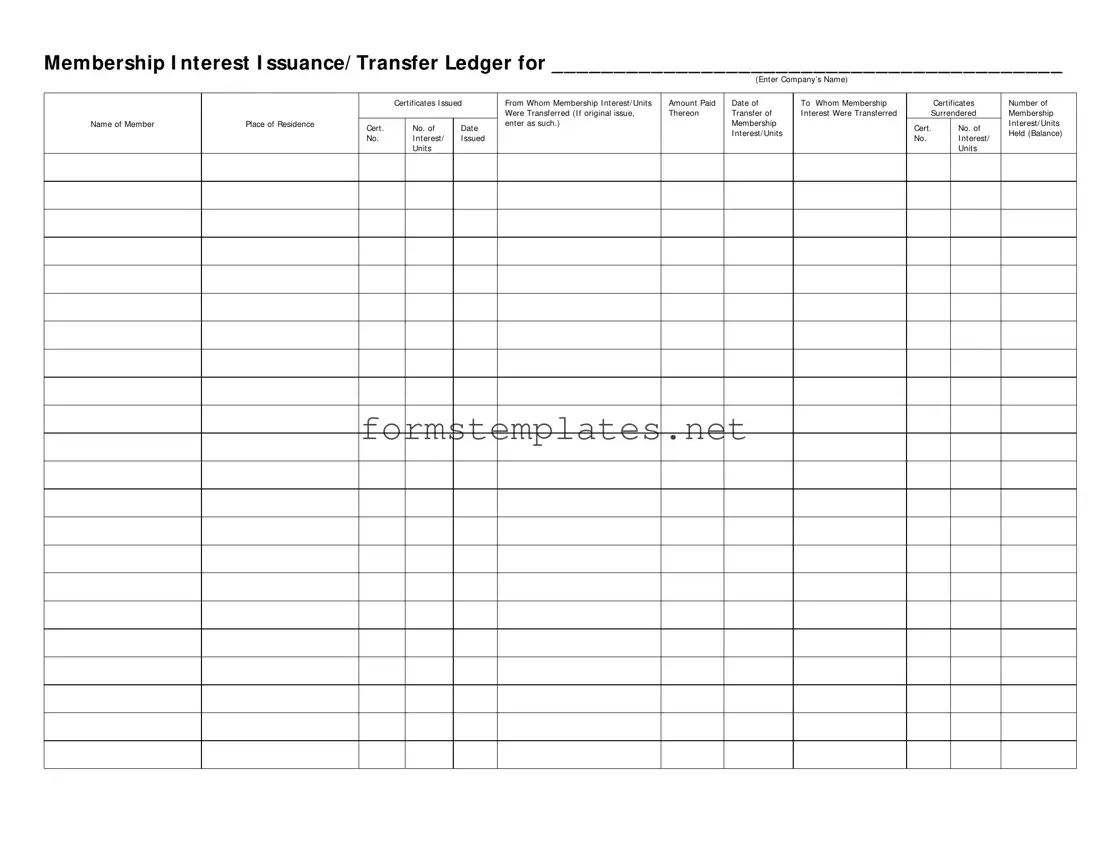The Membership Ledger form serves as a crucial tool for tracking and documenting the issuance and transfer of membership interests within a company. This form captures essential details, including the name of the company, the certificates issued, and the parties involved in each transaction. It provides a structured way to record the amount paid for membership interests, the dates of transfers, and the names and residences of the members involved. Additionally, the ledger allows for the identification of certificate numbers, ensuring that each membership interest is accounted for accurately. By maintaining a clear record of both original issuances and subsequent transfers, this form helps to uphold the integrity of ownership records and facilitates transparency in membership transactions. The careful documentation of membership interests is not only a best practice but also a legal necessity for companies seeking to manage their member relations effectively.

